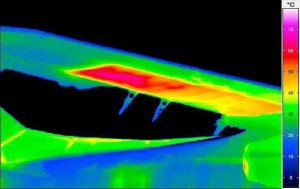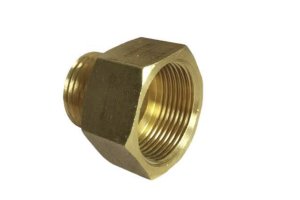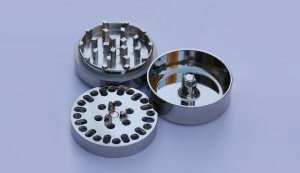The aerospace industry represents the pinnacle of human thought and engineering, with its focus on designing and producing gigantic flying machines such as rockets, airplanes, and jets. However, the complexity and precision involved in aerospace manufacturing make it a formidable task. Only a handful of companies worldwide have the expertise and resources to produce commercial planes in significant volumes. These companies face the immense challenge of manufacturing over 500,000 parts, many of which require extreme precision and durability. As a result, achieving the highest quality and cost efficiency in industrial aerospace machining becomes a paramount goal.
Challenges in Aerospace Part Production
The production of aerospace parts comes with its fair share of challenges. One of the primary difficulties stems from the diverse range of materials used in these parts. Engine elements, which play a vital role in aircraft performance, are typically made of heat-resistant hardened alloys that present significant machining difficulties. These alloys possess poor heat conductivity, leading to heat build-up in the tool during the machining process. Moreover, nickel alloys often undergo aging or heat treatment, making them even harder to machine. Furthermore, the aerospace industry demands higher precision compared to other sectors, and the complex geometries of aerospace parts further exacerbate the machining challenges.
In addition to the direct machining issues, aerospace part production faces numerous indirect problems. One such challenge lies in adhering to stringent production standards. The aerospace industry, alongside the medical sector, is one of the most regulated industries globally. Meeting all the quality requirements and ensuring compliance with these rigorous standards poses a considerable challenge for manufacturers.
Efficient Machining of Thin-Walled Aerospace Parts

Weight reduction is a critical factor in aerospace vehicle design, as it directly impacts fuel consumption. To achieve lighter designs, aerospace engineers often incorporate thin walls, lattices, and webs in their part designs. Traditionally, these parts were machined from solid blocks of metal, resulting in significant material waste of up to 95%. However, material efficiency is not the sole concern; machining thin-walled parts introduces the risk of deformation due to high cutting forces. Excessive feed rates and cut depths, particularly with nickel alloys, can lead to wall shattering from vibrations or wall deformation due to excessive heat. Consequently, machining thin-walled aerospace parts efficiently becomes a formidable task.
To tackle these challenges and compete effectively in machining thin-walled aerospace parts, mitigating vibration is crucial. Vibration caused by the tool striking the thin wall can lead to bending or cracking. By reducing the feed rate and increasing the number of cutting edges in milling operations or utilizing multiple cutting tools on a lathe, vibration can be minimized. Opting for climb milling, where the feed moves in the opposite direction of conventional milling, further reduces cutting forces and improves surface finish. This strategy ensures that the mill enters the material where the wall is thickest, resulting in reduced vibration. To counteract overheating, the use of progressive high-pressure coolants is necessary.
Trochoidal Machining Paths to Reduce Overheating
Overheating is a common challenge when machining aerospace alloys due to their poor heat conduction properties. Trochoidal milling presents an effective machining strategy to combat heat build-up. Leveraging the capabilities of CNC machines, trochoidal milling involves following complex cutting paths. This technique employs a small mill, smaller than the actual cut, which moves along a path resembling a spring’s side projection on a flat surface. During the milling process, the tool cuts along one curve, then moves back along the second curve before cutting the metal again. This alternating cutting and pausing sequence allows for efficient cooling of both the tool and the part using cutting fluids. Trochoidal turning, a similar strategy used in turning operations, incorporates short cutting and pausing sequences to prevent overheating. Although these approaches involve more tool runs, they compensate for it by increasing cutting speeds and feeds. In some cases, alternative machining techniques such as Electrical Discharge Machining (EDM) may be considered to overcome the challenges associated with traditional machining methods.
Selecting the Right Tools for Efficient Machining
CNC machines play a pivotal role in achieving machining efficiency, particularly in aluminum machining, within the realm of machine tools. Selecting the appropriate cutting tools is paramount to enhance efficiency. While there are various solutions available for machining softer alloys like aluminum, choosing the right tool for classified aerospace materials becomes more challenging.

Efficient tool selection for heat-resistant materials necessitates counteracting the negative properties of these materials. An ideal tool should exhibit minimal vibration, exceptional hardness, and high-temperature resistance to ensure consistent performance and longevity. Diamond cutting tools, for example, offer superior hardness and durability compared to carbide inserts, enabling them to withstand higher temperatures. Although diamond machining requires specific considerations, it can be tailored to suit the unique needs of aerospace manufacturers. Ceramic tools also demonstrate excellent performance in high-temperature environments.
To minimize vibrations during machining, mills with multiple cutting edges and sharper flute angles are recommended. These mills reduce the time and distance the tool passes before the next cutting edge engages the material, effectively decreasing vibration. Consequently, cutting parameters can be increased, leading to improved efficiency.
Systems Ensuring Machining Quality
Before commencing the machining process, accurately predicting the final tolerance, surface finish, and machining time is crucial. Recent advancements in mathematical modeling techniques have made this possible. Finite element analysis (FEA) stands out as a powerful tool that enables the simulation of cutting processes with a high degree of precision. Manufacturers can upload their models to FEA software to assess cutting forces, heat dissipation, and their impact on the final part. This technology empowers engineers to evaluate residual stresses, deformations, and other factors even before installing a blank on the CNC machine tool. By leveraging FEA, manufacturers can significantly reduce the need for costly re-runs and optimize the machining process.
How Want.Net Can Assist You
At Want.Net, we have made substantial investments in advanced CNC machining technology, including multi-axis machines. These cutting-edge capabilities enable us to process trial runs, customized short runs, and low-volume production runs with ease and efficiency. Whether you require machined parts for prototyping or production, we are here to help. Simply upload your CAD files today for a free quotation. With our expertise and state-of-the-art equipment, we are dedicated to meeting your aerospace machining needs. Trust Want.Net for precision, quality, and cost-effective solutions.
Recommended Reads:
- 9 Advantages of CNC Machining Over Conventional Machining
- How to Optimize Metal Machining Strategies for Improved Prototyping
- CNC Milling: Revolutionizing Automotive Part Production
- How Should Manufacturers Choose Materials For Their Prototypes?
- Preparing Your CAD Model for CNC Machining
Other Articles You Might Enjoy
- CNC Machining for Medical Applications: Compliance and Material Selection?
Introduction to CNC Machining in Medical Applications CNC or Computer Numerical Control machining is a manufacturing process wherein pre-programmed computer software dictates the movement of factory tools and machinery. This…
- Aerospace CNC Machining: What You Need to Know
At present, the global aerospace industry market value has increased by 278.43 billion, an increase of 6.6% compared to 2022. The ultra-high value proves that innovation in the aerospace industry…
- Precision CNC Machining of Steel: High-Volume Production
Precision CNC Machining and High-Volume Production As an integral part of modern manufacturing processes, Precision Computer Numerical Control (CNC) machining brings about unmatched accuracy and consistency in the production of…









